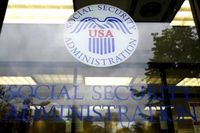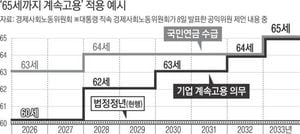For some Social Security recipients, May 2025 is shaping up to be a notable month, as many are set to receive three separate payments from the Social Security Administration (SSA). This unusual occurrence is primarily due to the scheduling of Supplemental Security Income (SSI) payments, which will see two distributions this month, alongside regular Social Security benefits.
Supplemental Security Income is a federal program designed to assist individuals who are elderly (65 and older), blind, or disabled, and who have limited income and resources. As of March 2025, more than 7.4 million people across the United States depend on SSI to cover essential living expenses such as housing, food, clothing, and medical care. The program serves as a crucial safety net for those who may not have worked long enough to qualify for traditional Social Security benefits.
This May, SSI recipients will see two payments: one on Thursday, May 1, and another on Friday, May 30. The latter payment is technically for June, as June 1 falls on a Sunday, prompting the SSA to issue the payment early to avoid any delays. As a result, recipients will not receive an SSI payment in June but will return to the regular payment schedule starting July 1.
The SSA's payment schedule is designed to ensure that benefits are delivered on time. Payments are typically sent out on the first of each month; however, if that date falls on a weekend or federal holiday, the payment shifts to the last business day of the previous month. This is precisely what is happening in May, as the early payment on May 30 is aligned with the SSA's established protocols.
For those who receive both SSI and Social Security benefits, the payment schedule varies slightly. SSI recipients will receive their regular payment on May 1, while their Social Security payment will be issued on May 2. Other Social Security recipients will see their payments staggered throughout the month based on their birth dates: those with birthdays from the 1st to the 10th will be paid on May 14, those from the 11th to the 20th on May 21, and those from the 21st to the 31st on May 28.
While the prospect of receiving two payments in one month might initially seem like a bonus, it’s important for recipients to understand that the second payment is simply the June payment arriving early. This means that careful budgeting is essential to ensure funds last through the month of June, as there will be no additional SSI payment during that time.
In addition to the scheduling changes, many SSI recipients may notice an increase in their benefit amounts this May due to the Social Security Fairness Act, which was enacted to adjust benefits for individuals who received public sector pensions. Approximately 3.2 million people, including police officers, firefighters, and teachers, will see their Social Security payments increased as a result of this adjustment. The larger payment amounts should be reflected in the checks received this month and in subsequent payments.
The maximum SSI payment for individuals is currently set at $967 per month, while couples filing together can receive up to $1,450. Essential persons providing necessary care to SSI recipients can receive up to $484. These amounts have risen by 2.5% since last year, reflecting adjustments for inflation.
As the May payments approach, the SSA has also issued a warning to recipients about potential scams. Individuals are advised to remain vigilant, as scammers often exploit confusion surrounding payment schedules. The SSA will never request personal information such as Social Security numbers or bank account details through phone calls, texts, or emails. Recipients are encouraged to report any suspicious communications to the SSA or the Federal Trade Commission (FTC).
To help manage their payments, recipients can log into their My Social Security account at ssa.gov. This online portal allows users to track payment dates, view benefit details, and make necessary changes to their accounts. Setting up an account is free and provides a straightforward way to stay informed about benefits.
Looking ahead, recipients can expect similar payment schedule adjustments later in 2025. The SSA’s calendar indicates that there will be two SSI payments in August, October, and December due to the same scheduling principles. Keeping track of these dates is crucial for effective budgeting and avoiding unexpected financial strain.
In summary, May 2025 presents a unique opportunity for SSI recipients to receive two payments, but it also requires careful financial planning to navigate the absence of a June payment. Understanding the reasons behind the payment schedule changes can help ensure that recipients remain informed and prepared for their financial needs.





